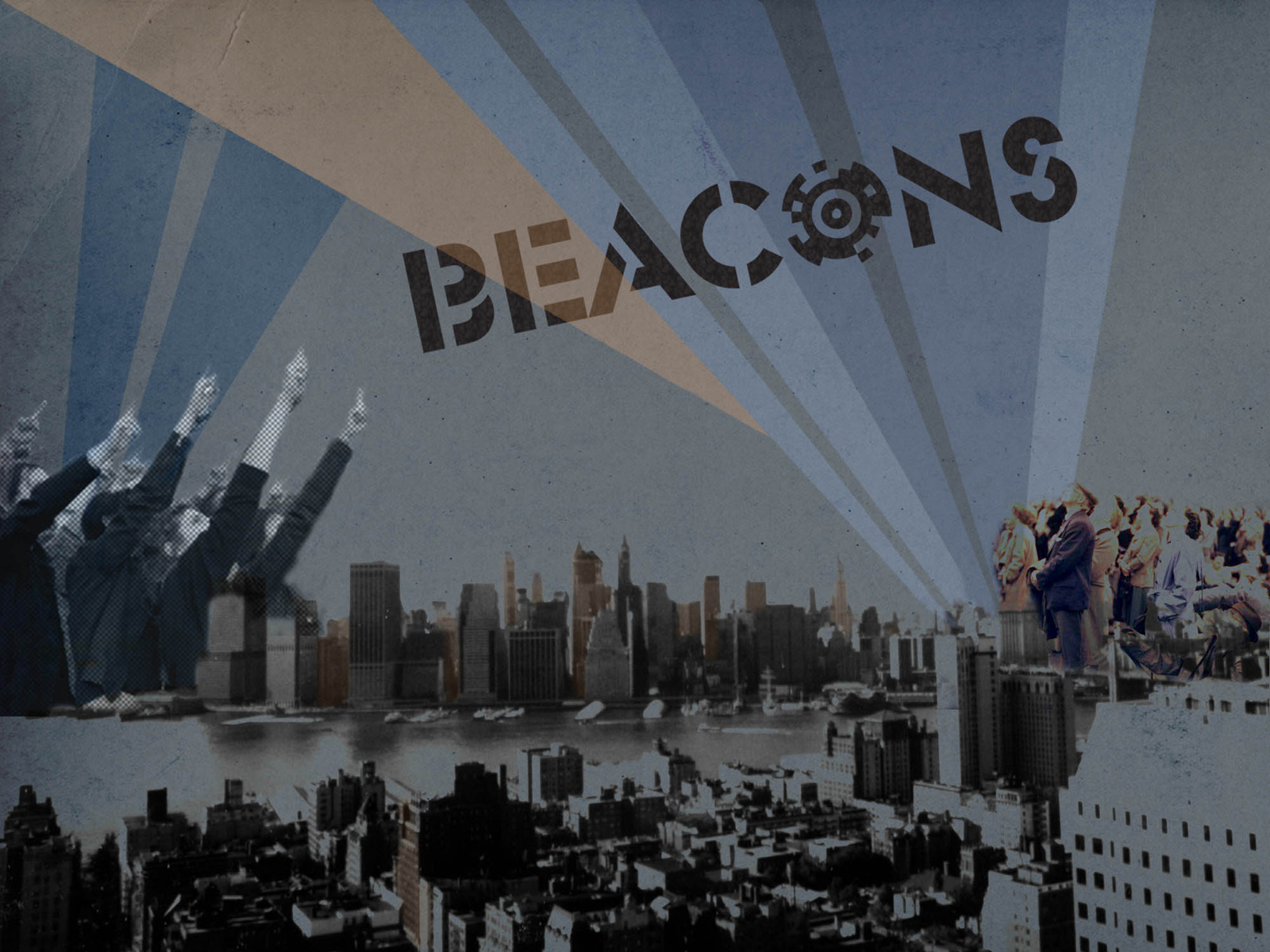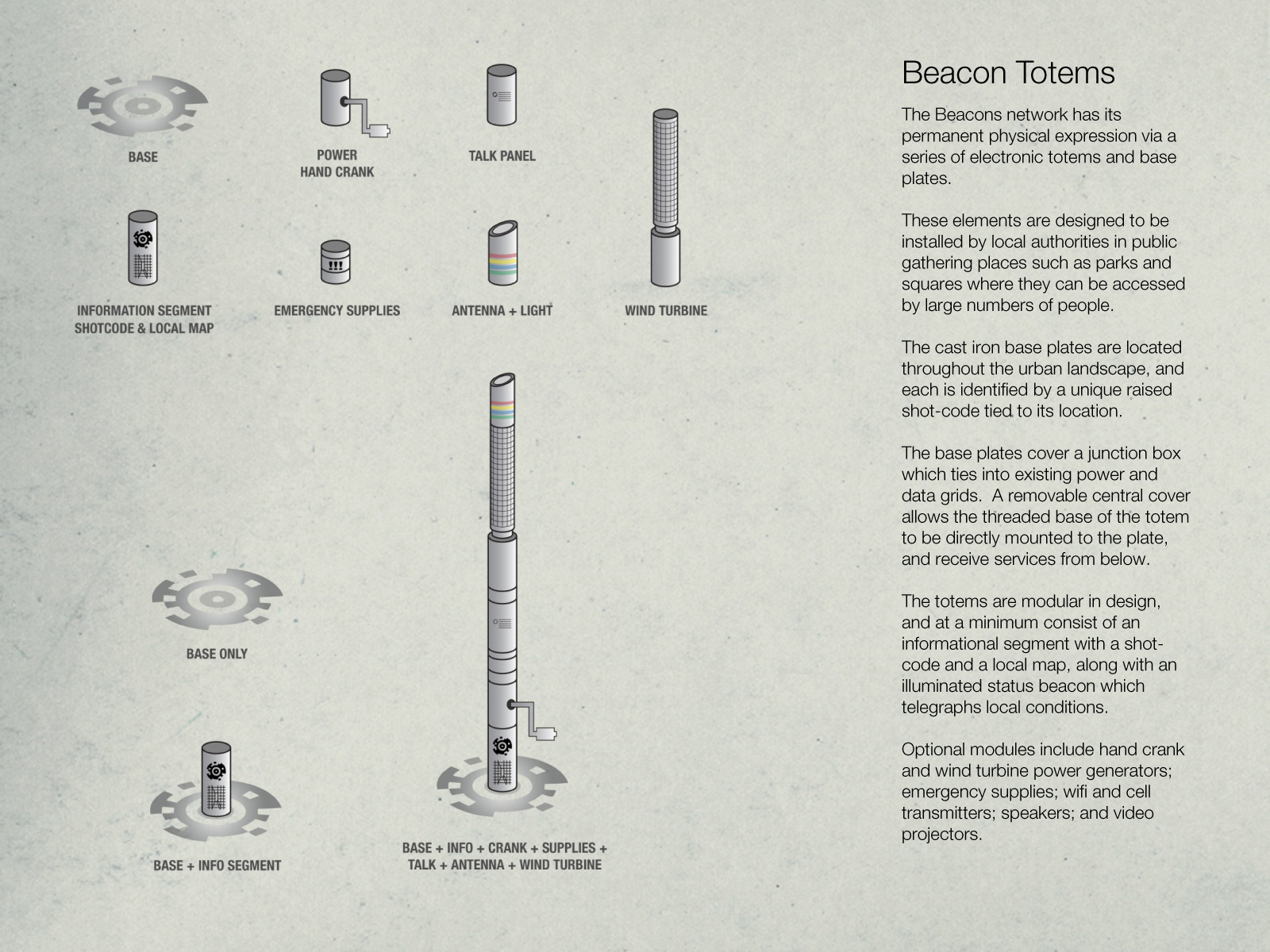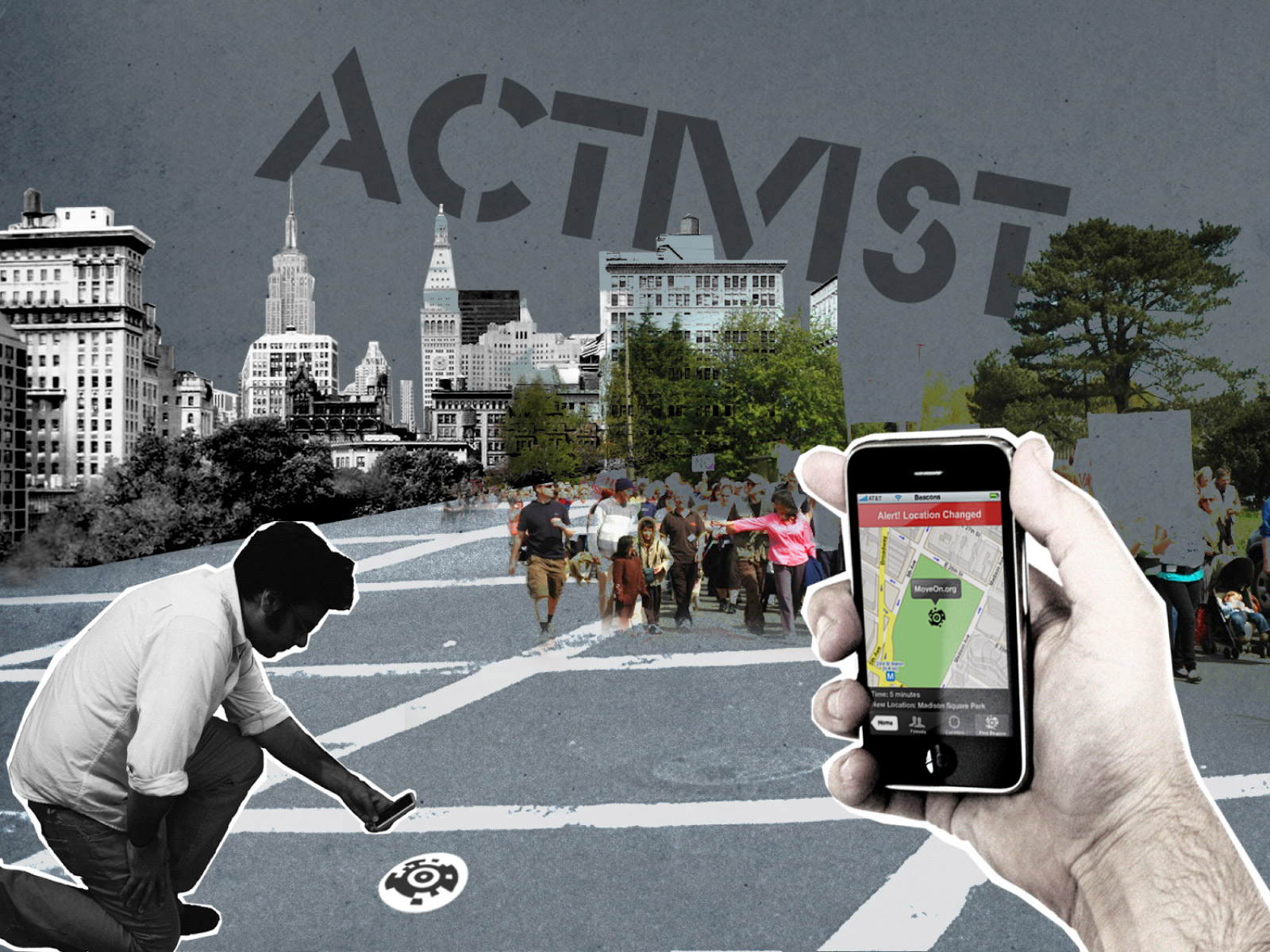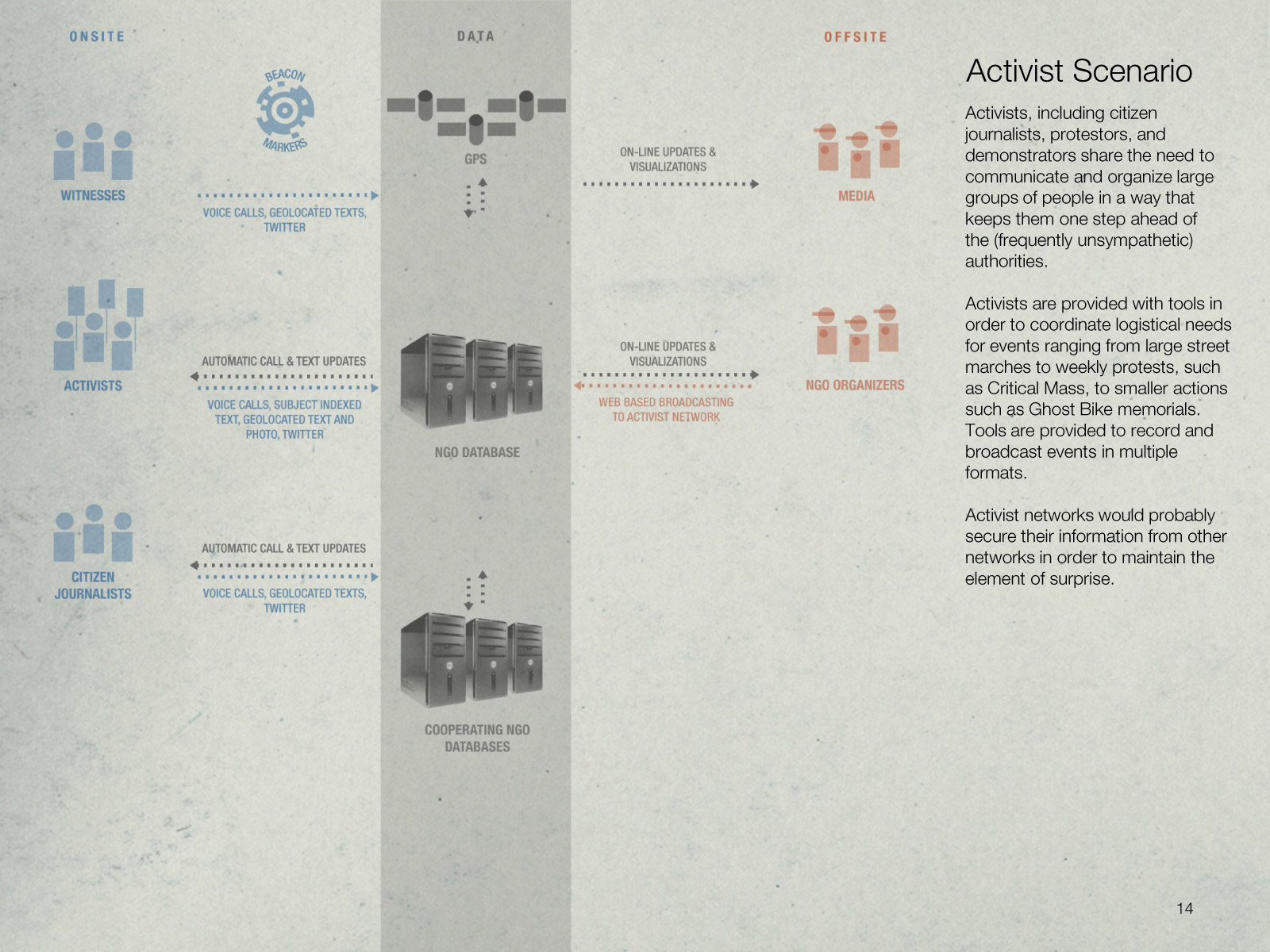Beacons
New York, NY, USA • 2008

The Beacons project provides a mechanism through which information and resources can be distributed bottom-up and laterally in times of immediate need, such as during natural disasters.
The Beacons project was inspired by ad hoc networks arising in times of immediate need, such as during natural disasters, public threats, or political actions, when official means of communication and top-down public services are disrupted, unavailable or undesirable. Beacons provides a mechanism through which information and resources can be distributed bottom-up and laterally, organically incorporating existing means of communication into the network.
The project takes advantage of the human tendency to gather, cooperate and share for the purpose of survival, without displacing, replacing or interfering with existing communication and management structures. Beacons’ goal is to provide an intuitive platform for the collection and distribution of location based information concerning available resources, which will accumulate as a knowledge base over time, and provide an alternate system of communication when central networks are down.
The Beacons network consists of two parts:1. An open source mobile application that maps, organizes and distributes geo-tagged information. Working in conjunction with a centralized database, the app organizes a variety of media (voice, texts, audio, video, images) and input from other applications (twitter) by geo-location and keyword. 2. Beacons, or physical totems in the urban landscape, that contain information about surrounding resources and allow for up/downloading information via hand powered wifi in the event of network failure. The beacons serve as community gathering points and portals for information exchange and resource distribution.
The Beacons open source application functions as an intermediary between the general public and an administrative back end that requires higher level of access to coordinates services. Depending on the user scenario, the public layer might represent the general community, victims, survivors, community organizers, volunteers, activists, citizen journalists, or gamers. The administrative layer represents the super users of the system, such as the system’s administrators or first responders. The software parses and organizes information from the public and administrative layers and broadcasts it directly or on-demand.
The system addresses four different general categories of needs, which take on different shades of meaning depending on the type of user scenario: security, shelter, sustenance and status. In this proposal, we investigate the application of two representative cases: emergency disaster relief and tactical actions.
As proof of concept for the system, we will also design a large scale urban game to be played during the run of the exhibition to serve as a prototyping tool, to seed the database with information, and to distribute the application so that the public might be familiar with it before time of need.
DESIGN TEAM
Jordan Parnass, Darrick Borowski, Randy Plemel, Christine Collister, Tara ShoenHolz, Anthony Moon, Danny Orenstein, Malin Schaedel
CONSULTANTS
Collaboration with Melanie Crean and Liubo Borrisov




